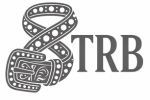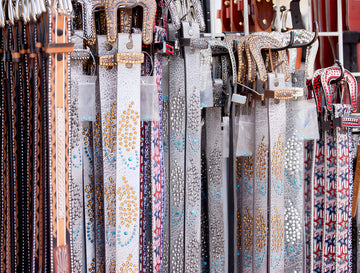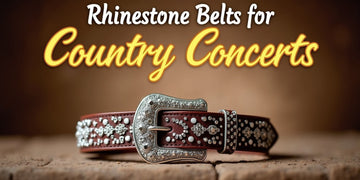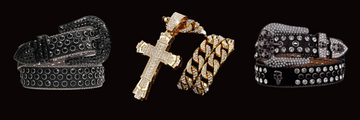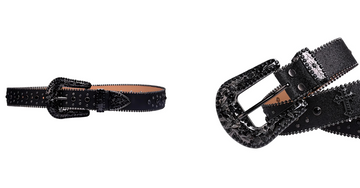Styling is more than just wearing clothes; it’s about creating a cohesive and polished look that reflects your personality and helps you express your inner self. Whether you’re dressing for a casual outing, a formal event, or an everyday look, knowing how to style fashion and accessories like a pro can elevate your appearance. Moreover, this can also give a boost to your confidence and morale in dealing with everyday life situations. This is an important aspect of an individual’s personality as many people build their impression of another person based on their looks and demeanor.
This blog aims to educate regarding styling and accessorizing tips, allowing you to operate more confidently and effectively in daily life interactions.
Understand Your Style
Before diving into trends, it’s essential to understand your personal style.This particularly means to know what kind of fashion and accessories compliment your personality. For instance a managerial level employee at a corporate firm might not opt for fancy and bold fashion items.
-
Know Your Preferences: Are you drawn to minimalist outfits or bold patterns? Identifying your tastes helps create a wardrobe that feels authentic.
-
Consider Your Lifestyle: Your style should align with your daily activities. Professionals may need a more polished wardrobe, while casual settings call for relaxed, versatile pieces.
-
Experiment: Don’t hesitate to try new styles and accessories to discover what suits you best. If you are a person who prefers dark colored clothes then choosing to wear bright colored outfits especially during the summers can seriously impact your style statement cousin you to ‘break the mold’.
Build a Strong Foundation
Every great outfit starts with the right basics. An outfit doesn’t need to be downright flamboyant for it to outshine the rest in a crowd. The basics need to be done right for the entire outfit to be coherently attractive.
-
Invest in Quality Staples: Items like tailored trousers, plain T-shirts, and classic jeans serve as the foundation of any look. These are wardrobe essentials as they can be used or paired up with different items forming various outfit styles.
-
Neutral Colors: Neutral tones like black, white, beige, and navy are versatile and easy to mix and match. These can act as a base of adding further styling elements such as a colorful pair of sneakers.
-
Well-Fitted Clothes: Ensure your clothes fit well, as ill-fitting outfits can diminish even the most stylish look. This does not mean that clothes need to be body fit; instead it refers to clothes being stitched properly. The currently trending men suiting line-up consists of loose fit coats as in the 80’s.
Tips for Styling Fashion
1. Play with Layers
Layering adds depth and interest to any outfit. Different kinds of fabrics and colors compliment one another creating different looks altogether . For instance a plain white t-shirt with blue jeans is a normal daily outfit. But, adding a jacket on top can change the look of the outfit with the addition of a single layer.
-
Combine different textures, such as a denim jacket over a knit sweater.
-
Use lightweight layers for summer and heavier ones for winter.
-
Experiment with patterns by layering a striped shirt under a plain blazer.
2. Mix Casual and Formal
Blend casual and formal pieces for a balanced and modern look. This creates a fusion of clothing apparel and accessories. Such fashion styles have been a major highlight in the current fashion regime.
-
A tucked in polo shirt with jeans is one of the most trending summer looks following the same suite.
-
Pair sneakers with a tailored suit for a trendy vibe.
-
Combine a denim jacket with a pencil skirt to create a relaxed yet sophisticated ensemble.
3. Balance Proportions
Keep your silhouette balanced by pairing loose items with fitted ones. Accessories such as fancy belts are used to make even simple loose dresses look stylish and attractive by balancing body proportions.
-
Wear slim jeans with oversized sweaters for a casual chic look.
-
Pair a fitted top with wide-leg pants to create a flattering contrast.
4. Use Color Strategically
Colors can make or break an outfit. The importance of colors in fashion cannot be stressed upon enough. The whole subject of color psychology or theory in fashion designing is a testament of the importance of color schemes and their usage in creating the ideal looks.
-
Use bold colors sparingly to avoid overwhelming your look.
-
Incorporate one statement piece, like a vibrant jacket or a bright scarf, into a neutral outfit.
-
Experiment with color-blocking for a creative and eye-catching appearance. For instance a vibrant colored heel with a monochrome dress automatically becomes more eye-catching.
5. Mind the Occasion
As the old saying goes, ‘When in Rome, do as the Romans do’. This can be extrapolated to dressing oneself. Your outfit should always reflect the event, setting or ambience. This makes the outfit much more appealing as it fits the mold.
-
For work: Stick to structured pieces like blazers, trousers, and neutral accessories.
-
For casual outings: Opt for comfortable items like jeans, T-shirts, and sneakers.
-
For formal events: Choose elegant dresses or tailored suits paired with sophisticated accessories.
Accessorize Like a Pro
Accessories can transform an outfit from ordinary to extraordinary. Even a single piece can sometimes outshine the rest of the outfit or even add some details that perfectly set in with the rest of the dress..
1. Jewelry
Jewelry adds sparkle and personality to your look. They also provide the completion or finishing touches to an outfit. For instance a suit and tie without a watch seems incomplete. Similarly a woman wearing a dress but not wearing a necklace or ring may seem to have missed out on an otherwise perfect outfit.
-
Everyday Wear: Opt for minimalistic pieces like stud earrings or delicate necklaces.
-
Statement Pieces: For special occasions, choose bold necklaces or chandelier earrings to make an impact.
-
Stacking: Layer multiple rings, bracelets, or necklaces to create a modern vibe.
2. Bags
Your bag is both functional and fashionable. Bags are a need to hold important possessions such as cell phones or money. At the same time they can also have a profound impact on an attire.
-
Everyday Bags: Choose a medium-sized tote or crossbody bag for practicality and style.
-
Evening Bags: A sleek clutch or small handbag is perfect for formal events.
-
Colors and Patterns: Use bold bags to add a pop of color to neutral outfits.
3. Shoes
Shoes can make or break an outfit. According to many researchers, people form an image of the other person based on their shoes and it is also the first apparel item that catches the attention of a bystander.
-
Casual: Sneakers or loafers work well for everyday looks.
-
Formal: Heels or dress shoes elevate your outfit for events and meetings.
-
Seasonal: Invest in boots for winter and sandals for summer.
4. Belts
Belts are functional and fashionable. Belts not only hold your outfit together, literally and figuratively, but also contribute to an outfit’s look. Unless they are worn under the shirt, belts need to be aligned with the color palette of the outfit.
-
Waist-Defining: Use a statement belt to cinch dresses or coats for a flattering silhouette.
-
Casual Belts: Pair with jeans for a polished, casual look.
-
Bold Options: Try metallic or patterned belts to add character to your outfit.
5. Scarves and Hats
Scarves and hats can completely alter an outfit. A man wearing a baseball cap with a suit would probably be ridiculed. In contrast, wearing a cowboy hat while being formally dressed is a normal thing in the southern areas of the USA.
-
Scarves: Use lightweight scarves in summer and woolen ones in winter to add style and warmth.
-
Hats: Fedoras, beanies, or wide-brim hats can complete any outfit and serve as practical accessories.
Advanced Styling Tricks
1. Create Layers of Accessories
Combine different accessories to add depth. Layer necklaces with varying lengths or wear stacked bracelets for an eye-catching detail.
2. Play with Monochrome Looks
Dressing head-to-toe in one color creates a sleek and elongated silhouette. Break up the monotony with a textured jacket or contrasting accessory.
3. Seasonal Adaptations
Seasonal adaptation is a primary mode of buying and wearing outfits. This categorization is also the means of arranging one’s wardrobe and also is the primary determinant of outfit selection.
-
For winter: Use heavier fabrics, coats, and boots. Add scarves and gloves for warmth and style.
-
For summer: Lightweight dresses, sandals, and straw hats keep you chic and comfortable.
4. Mix High and Low Fashion
Pair luxury items with budget-friendly pieces. A designer bag can elevate a simple dress, while affordable jewelry can enhance high-quality basics. Many people focus on pairing expensive shoes for their daily work outfit as shoes catch the attention of an observer first.
5. Customize Your Look
Personalized or customized accessories, such as monogrammed bags or handmade jewelry, make your outfits feel one-of-a-kind. Nowadays, engraved jewelry items have gained disable traction and are being well received by the general public.
How Formal Training Can Help in Everyday Fashion Styling
Formal training in fashion styling through fashion courses or fashion schools doesn’t just benefit professionals; it can also significantly enhance everyday styling for individuals looking to improve their appearance and confidence. These do not require formal education and degrees but simply a way of understanding the dynamics of fashion and trends and how to balance them.
1. Understanding What Works for You
Formal training and grooming provides insight into body types, color theory, and personal styling techniques. Learning about how different cuts, fabrics, and colors flatter specific body shapes and skin tones can help you make informed decisions. This knowledge allows you to build a wardrobe that complements your unique features, ensuring that you always feel confident in your outfits.
2. Building a Versatile Wardrobe
With professional training, you can learn the art of creating a functional yet stylish wardrobe. This includes understanding wardrobe essentials, layering techniques, and accessorizing. Formal training teaches you how to curate a closet filled with versatile pieces that can be mixed and matched for multiple occasions, reducing the stress of daily outfit selection.
3. Mastering the Art of Accessorizing
Accessories are key to elevating everyday looks, and formal training emphasizes their role in fashion. From selecting the right jewelry to incorporating scarves or belts, you’ll gain skills to transform even the simplest outfits into chic ensembles. This knowledge helps you adapt your look based on events or seasons effortlessly.
4. Staying Updated with Trends
Professional courses often include lessons on trend forecasting and incorporating trends into everyday wear. You’ll learn how to blend timeless pieces with seasonal trends, ensuring your outfits remain fresh and stylish without looking overdone.
Though formal training is not the preferred method to improve one’s style however, reading and following fashion related material such as magazines can significantly boost a person’s fashion sense and make them aware of prevailing trends.
All this discussion of stylizing oneself on a regular basis may seem a frivolous task to many but in reality this can have a strong impact on a person and may become the need to a person in some cases.
Why Does a Person Need to Stylize Their Fashion?
Stylizing one’s fashion is more than just keeping up with trends; it’s a way to express individuality, build confidence, and make lasting impressions. Here are the key reasons why stylizing fashion is important:
1. Reflecting Personal Identity
Fashion is a powerful form of self-expression. The way you dress reflects your personality, preferences, and lifestyle. By stylizing your fashion, you can convey who you are without saying a word. Whether it’s through bold prints, minimalistic designs, or vintage pieces, your style becomes a signature that tells your story.
2. Boosting Confidence
Wearing outfits that compliment your body shape, skin tone, and personal taste can greatly enhance self-confidence. When you feel good about your appearance, it positively impacts your interactions and mindset. Stylized fashion ensures that you always step out feeling comfortable and self-assured.
3. Making Strong Impressions
First impressions are often based on appearance, and your outfit plays a significant role in how people perceive you. A well-stylized look can convey professionalism, creativity, or approachability, depending on the occasion. Dressing thoughtfully ensures you’re always making the right impression, whether at work, social events, or casual outings.
4. Adapting to Occasions
Stylized fashion helps you dress appropriately for various events and settings. From formal gatherings to casual meet-ups, knowing how to adapt your style ensures you’re always well-prepared. It allows you to balance personal expression with societal norms effortlessly.
5. Staying Current and Relevant
Fashion is ever-evolving, and stylizing your wardrobe allows you to incorporate current trends while maintaining a timeless look. It keeps your appearance fresh and modern, showcasing your adaptability and awareness of the world around you.
Stylizing fashion is an essential part of presenting yourself authentically and confidently in everyday life. It’s not about following every trend but curating a wardrobe that resonates with your identity and enhances your lifestyle.
Conclusion
Styling fashion and accessories like a pro is an art that blends creativity with practical knowledge. By building a versatile wardrobe, focusing on fit, and using accessories strategically, you can elevate any outfit to the next level. Remember to experiment and stay true to your personal style while incorporating modern trends. Implementing these tips can provide the impetus to your confidence and style in any setting.
FAQs
How do I make a basic outfit look stylish?
Enhance a simple outfit with accessories like a bold necklace, sleek belt, or eye-catching shoes. Adding layers, such as a stylish blazer or cardigan, creates depth. Play with textures or include a pop of color to elevate your overall look effortlessly.
What are the must-have accessories for a versatile wardrobe?
Essential accessories include a watch, a neutral tote bag that complements multiple outfits, and comfortable yet chic shoes like loafers or ankle boots. Minimalistic jewelry such as stud earrings or dainty chains, can also be added to the wardrobe as they add subtle elegance to everyday wear.
How do I know which colors suit me best?
Determine your skin undertone: warm tones work well with earthy shades like mustard or terracotta, while cool tones shine in colors like sapphire or lavender. Neutral undertones can experiment with a mix of both. A simple way to determine the color that suits you is by juxtaposing it with your face.
How can I look stylish without overspending?
Invest in versatile apparel items like classic jeans, white shirts, and tailored blazers. Shop during sales or opt for second-hand finds to get quality pieces at a fraction of the price. Accessories, like scarves or statement earrings, can refresh your outfits without breaking the bank.
How do I balance casual and formal elements in an outfit?
Combine structured pieces with relaxed ones, such as a tailored blazer over a plain T-shirt or sneakers paired with a sleek midi skirt. Stick to a cohesive color palette and accessorize thoughtfully to maintain a polished yet approachable appearance.
